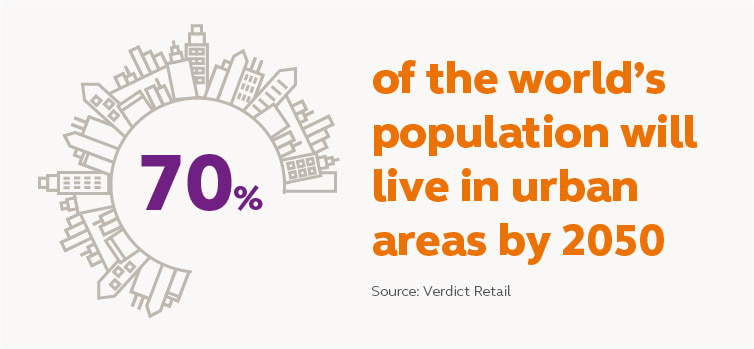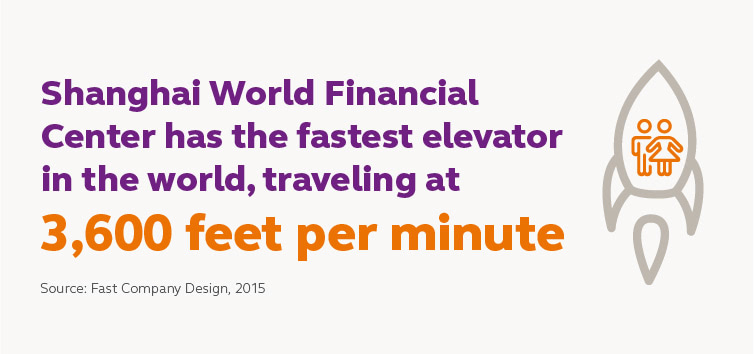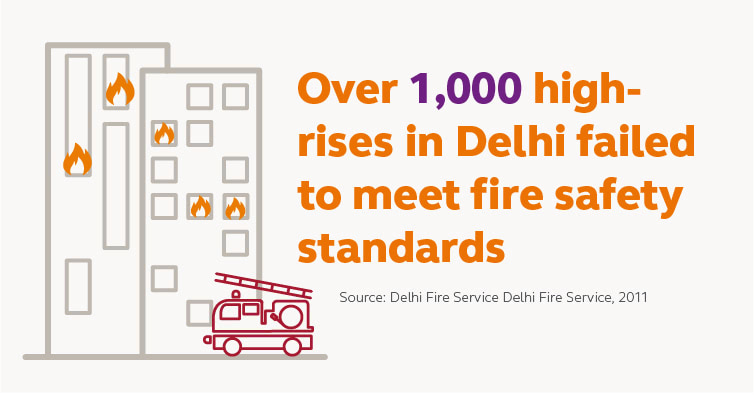
DATÜM: High-Rise Innovation
As megacities expand and the list of cities-turned-megacities continues to grow, densification and limited resources make the tall tower fundamental to achieving high density within a small footprint. Yet the fact remains that most tall towers are resource-intensive and expensive to build and maintain—not to mention the psychological and social impact towers they can have on workers and residents.
Is it possible to design an aesthetically appealing, iconic addition to the urban skyline that is also friendly to its environment and provides a sense of community? The pressure is on as high-rise innovators around the world explore how to design this iconic building typology in a way that maximizes performance and value.

Rising Influence
With a rapid influx of people into urban centers comes a shortage of space in which to work and live, and with great economic growth comes the desire on the part of city leadership and developers to build higher and higher. High-rises and supertall towers are the go-to solution for doing more with less space. While these structures can take enormous social and environmental tolls and present obvious safety concerns, their dominance on city skylines only continues to grow.
- By 2030, the world is projected to have 41 megacities, compared to just 10 in 1990 [source: Colliers, 2015]
- In 2015, about 40% of total U.S. energy consumption was consumed in residential and commercial buildings [source: EIA]
- The 100-floor elevator ride up to the observation deck of New York’s 1 World Trade Center ride takes just one minute [source: Scientific American, 2015]
Elevated Inspiration
High-rises may make for a stunning, revenue-generating skyline, but creating taller stacks comes at a price: high energy consumption and expensive technology for efficient vertical transit, for starters. A look at what’s trending in high-rise design and construction reveals a concerted effort to mitigate some of those less desirable impacts.
The Anywhere Elevator
The commercial passenger elevator is an invention that hasn’t changed much since its inception in the 1850s. This technology has made it possible for tall towers to exist, taking people swiftly up floors and back down to street level. ThyssenKrupp is looking to change the way people ride by getting rid of cables and counterweights in favor of “maglev” railway technology, making it possible to build a ropeless lift that allows vertical and horizontal travel and transforming elevator shafts into complex, railway-like networks.

Artificially Intelligent Emergency Responders
Firefighters struggle to control, contain and combat fires in skyscrapers due to the speed at which fires spread through vertical, high-density spaces. Enter a new firefighting drone known as the Fireproof Aerial Robot System (FAROS), which can detect fires in skyscrapers, conduct searches within the building and transfer real-time data from the fire scene to the station on the ground. NASA is also developing an AI system that gathers data on emergency situations and provides guidance to responders. These innovative new technologies assist first responders before they enter the building and as they move through it.

The Modular Skyscraper
Modular offsite construction has accelerated in popularity in the overall building industry, and high-rises are no exception. In 2015, Chinese development company Broad Sustainable Building (BSB) built the world’s tallest 57-story flatpack tower in a record 19 days at a rate of three stories per day. The ultimate goal is to build the world’s tallest skyscraper using flatpack technology. While this achievement may be a long way off, modular, prefab construction could transform the construction industry with its offer of shorter timelines, less waste and possible cost savings for developers.
A Timber Skyline
Sustainably harvested, cross-laminated timber is fast establishing itself as a quicker and cost-effective alternative to concrete or steel structural frames—not to mention an innovation with potentially huge environmental benefits, given that concrete is the second most-consumed substance after water and cement production accounts for as much as eight percent of human-produced carbon dioxide admissions. Mass timber panels are produced by gluing layers of lumber together, resulting in a material just as strong and fire-resistant as steel and concrete but can be drilled like wood and weighs 2.5 times less than that of an equivalent concrete frame. While engineered timber has been widely implemented, the race is on to construct the next generation ‘Woodscraper,’ with various design concepts already in the pipeline.
Solar Power, Solar Tower
A tall tower as a desert oasis may seem far-reaching, but there is one major advantage to building high in a barren landscape: the ability to harness the power of the sun. Construction is set to begin on the world’s tallest solar tower—a 787-ft-tall structure in Israel’s Negev desert that will supply 1% of the country’s power. Surrounded by 50,600 sun-tracking heliostats over 3.15 square kilometers, the tower will provide 121 MW of concentrated solar power (CSP) at the Ashalim Solar Thermal Station.
Higher performance and Better design
As cities get smarter, how can tall towers keep up?
- Establish a Global Standard for Construction Technology
- Retrofitting existing high-rises can be incredibly difficult—if not impossible—given that some don’t come anywhere near meeting the equivalent of modern standards for safety, efficiency and quality. Establishing an improved, consistent and global standard for construction materials and technology would go a long way toward ensuring tall towers can continue to be structurally useful long-term.
- Design for Performance and Sustainability
- These buildings require an enormous amount of resources to satisfy the needs of the tenants, so designing for sustainability is key. Maximizing energy efficiency, using appropriate materials (including reclaimed or reused materials) and making the most of natural resources will help the building produce more than it consumes. Opportunities also abound to implement measures that enable the building to support the health and well-being of its users.
- Plan for Safety and Vertical Transportation Efficiency
- Tall towers are particularly vulnerable to emergency situations, including fires and natural disasters. Using the latest technology can help to ensure structural stability and aerodynamic optimization in super-tall buildings, enhancing public perception of tall towers as safe spaces in which to live, work and play.
